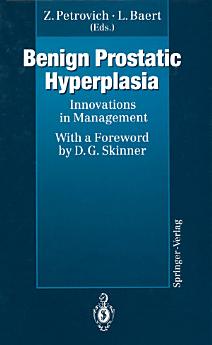Benign Prostatic Hyperplasia: Innovations in Management
Zbigniew Petrovich · Luc Baert
Dec 2012 · Springer Science & Business Media
Ebook
384
Pages
reportRatings and reviews aren’t verified Learn More
About this ebook
A symposium on benign prostatic hyperplasia is appropriate at a time when new knowledge and new technology are rapidly emerging. As the age of the population has increased and diagnostic methods have improved, the incidence of diseases of the prostate has increased. Benign prostatic hyperplasia (BPH) is the most common benign tumor in men and results in urinary symptoms in the majority of men older than 50 years; furthermore it has in the past necessitated operative intervention in 20%-30% of men who live to the age of 80 years. The relief of obstruction resulting from this benign neoplasm by means of transurethral resection (TURP) or surgical enucleation represented a major advance and helped to establish urology as a major surgical science. Over the years, urologists became more and more proficient with the resectoscope, reducing the need for open surgery, and over time more procedures were done for more modest symptoms. Although unquestionably effective in the relief of bladder outlet obstruction in the majority of men treated, TURP has not been without morbidity. In 1989, the American Urological Association (AUA) reported an 18% im mediate postoperative morbidity in its cooperative study of 13 participating institutions evaluating 3885 patients (MEBUST et al. 1989). Included were patients requiring transfusion, those experiencing excessive absorption of irrigating fluids ("TUR syndrome"), those experiencing myocardial arrhythmias, and a few suffer ing myocardial infarction.
Rate this ebook
Tell us what you think.
Reading information
Smartphones and tablets
Install the Google Play Books app for Android and iPad/iPhone. It syncs automatically with your account and allows you to read online or offline wherever you are.
Laptops and computers
You can listen to audiobooks purchased on Google Play using your computer's web browser.
eReaders and other devices
To read on e-ink devices like Kobo eReaders, you'll need to download a file and transfer it to your device. Follow the detailed Help Center instructions to transfer the files to supported eReaders.






